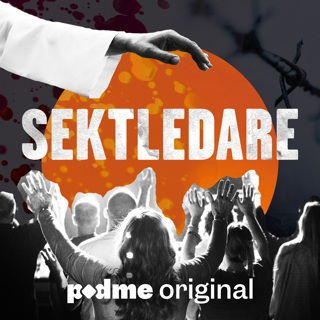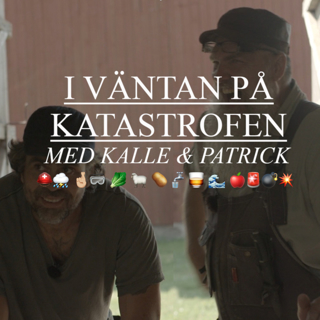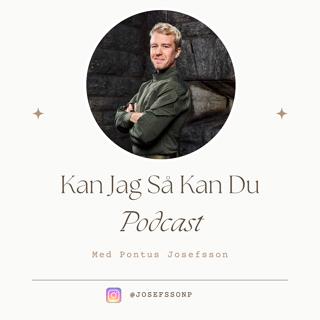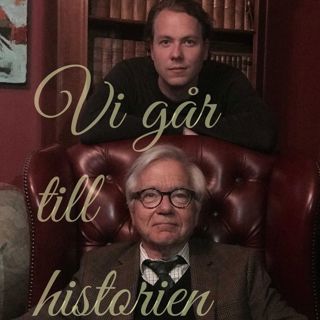
Ep. 265 The TheraSphere Story with Dr. Riad Salem and Peter Pattison
In this crossover episode between BackTable VI and BackTable Innovation, Dr. Chris Beck interviews Dr. Riad Salem (Chief of Interventional Radiology at Northwestern University) and Peter Pattison (President of Interventional Oncology at Boston Scientific) about how TheraSpheres for Y90 radioembolization became a mainstay in the IR toolkit for HCC and where the technology is heading next. --- CHECK OUT OUR SPONSOR Reflow Medical https://www.reflowmedical.com/ --- EARN CME Reflect on how this Podcast applies to your day-to-day and earn AMA PRA Category 1 CMEs: https://earnc.me/PvWJlD --- SHOW NOTES To begin, Peter outlines how the original concept of TheraSpheres began at the University of Missouri, as a collaboration between Drs. Delbert Day and Gary Ehrhardt, who combined their ceramic and nuclear chemistry expertises to create radioactive glass beads and published a paper in 1987. After animal and human testing, the product was licensed to the company Nordion, where Peter worked. The product was given a humanitarian device exemption (HDE) from the FDA, which allowed TheraSpheres to be used for investigational purposes. In the late 1990s, Dr. Salem was in his early interventional oncology career and heard about TheraSpheres. He recognized the enormous potential that this technology had to ensure known amounts of radioactive doses were delivered to the tumor and minimize adverse effects. In fact, he noticed that his Y90 patients had less pain, post-embolization syndrome, and hospitalization than his transarterial chemoembolization (TACE) patients. In the mid 2000s, he collected and submitted data to various conferences and journals, but he was met with criticism from the IR world, which was more comfortable with TACE, since it was the current standard of care. In 2011, Nordion decided to run a clinical trial, EPOCH, which eventually showed that the addition of TARE to systemic therapy for colorectal metastases to the liver led to longer progression free survival. Dr. Riad has focused his efforts on training more IRs on the methodology of Y90, since this was an important step to increasing adoption and minimizing missteps with the new technology. He believes that the advent of Y90 has resulted in better angiography, since IRs are more cognizant of off-target embolization. Dr. Salem also petitioned at the US Nuclear Regulatory Committee to allow IRs to become the authorized users for Y90 injection and advocated to add TARE to the National Comprehensive Cancer Network guidelines for liver cancer. Both of these developments allowed TARE to become more widely adopted. Finally, Peter discusses the competition that TheraSpheres has faced from TACE and SIRSpheres (resin-based radioembolization). He shares exciting new developments that have occurred since acquisition by Boston Scientific. These include exploration for the extra-hepatic use of TheraSpheres in glioblastoma and prostate cancer. --- RESOURCES BackTable Ep. 223- Portal Vein Recan #ReCanDoIt with Dr. Riad Salem: https://www.backtable.com/shows/vi/podcasts/223/portal-vein-recan-recandoit Therapeutic Use of 90Y Microspheres: https://pubmed.ncbi.nlm.nih.gov/3667306/ A phase I dose escalation trial of yttrium-90 microspheres in the treatment of primary hepatocellular carcinoma: https://pubmed.ncbi.nlm.nih.gov/1327493/ Hepatic radioembolization with yttrium-90 containing glass microspheres: preliminary results and clinical follow-up: https://pubmed.ncbi.nlm.nih.gov/7931662/ Humanitarian Device Exemption: https://www.fda.gov/medical-devices/premarket-submissions-selecting-and-preparing-correct-submission/humanitarian-device-exemption EPOCH Trial: https://ascopubs.org/doi/full/10.1200/JCO.21.01839 Radioembolization with 90Yttrium Microspheres: A State-of-the-Art Brachytherapy Treatment for Primary and Secondary Liver Malignancies: https://www.jvir.org/article/S1051-0443(07)60901-4/fulltext
25 Nov 20221h 1min

Ep. 264 The Halo Effect with Dr. Sandeep Bagla
In this episode, cohosts Dr. Aparna Baheti and Dr. Aaron Fritts interview interventional radiologist Dr. Sandeep Bagla about “The Halo Effect”, including how to recognize when you are being subjected to bias, and how to critically evaluate bad outcomes to improve your practice and enhance patient safety. The CE experience for this Podcast is powered by CMEfy - click here to reflect and earn credits: https://earnc.me/FSZCxF --- CHECK OUT OUR SPONSORS Accountable Physician Advisors http://www.accountablephysicianadvisors.com/ Accountable Revenue Cycle Solutions https://www.accountablerevcycle.com/ --- SHOW NOTES Dr. Bagla begins by describing the halo effect. The halo effect describes the tendency for people to overestimate the value of individual positive attributes when evaluating the whole. Thiis can happen when we form our opinions of people, techniques, and even medical devices. The opposite is also true, named the horn effect, where we tend to overestimate negative attributes. They are both forms of bias. In interventional radiology, the halo effect can impact case outcomes by contributing to operator tunnel vision and the reluctance to waver from the desired way of executing a procedure. For Dr. Bagla, the idea of the halo effect came about while working with new colleagues, many of whom do things differently than he did. He realized that in IR, physicians do things a certain way because that’s how they learned in training, whether it really is the safest and best way, or just the most familiar. He also sees the horn effect occur often when people start using a new device. If the device doesn’t work well for them the first time, many often refuse to use it in the future based on that first experience. He summarizes by noting that in IR, there are so many opportunities to become biased, whether through the halo effect or the horn effect. Lastly, Dr. Bagla reviews how he works to avoid these inherent biases. The first step in overcoming this bias is to understand its presence. Next, you must stop and realize that what you are doing is not working, whether due to the procedural approach, the device, or the way you are using the device. Dr. Bagla believes we must be critical of ourselves and try to think outside of our preferred wire, catheter, or device. In order to do this, you must go through the steps and review your checklist in order to determine which step the problem occurred at. Only by doing this can you avoid falling victim to these biases that are so prevalent in medicine. --- RESOURCES BackTable Episode 195: Disclosures of Conflicts of Interest https://www.backtable.com/shows/vi/podcasts/195/disclosures-of-conflicts-of-interest
21 Nov 20221h 2min

Ep. 263 How I Perform Renal Biopsies with Chris and Aaron
In this next installment of our Back to the Basics series, Drs. Aaron Fritts and Chris Beck discuss their techniques, considerations, and tips for ensuring safe and high quality renal biopsies. The CE experience for this Podcast is powered by CMEfy - click here to reflect and earn credits: https://earnc.me/bYgmZk --- CHECK OUT OUR SPONSORS Laurel Road for Doctors https://www.laurelroad.com/healthcare-banking/ RADPAD® Radiation Protection https://www.radpad.com/ --- SHOW NOTES First, the doctors discuss indications and contraindications for biopsy. In the outpatient setting, the doctors have noticed that proteinuria is the most common reason for referral, followed by lupus nephritis. For inpatients, acute unexplained kidney failure is an additional indication. It is important to talk with nephrologists to weigh the risks and benefits of renal biopsy, especially if the patient has a coagulopathy, is experiencing uncontrolled hypertension, or is too unstable to lay prone on the table. The SIR Guidelines app is a useful tool to risk stratify patients. In terms of imaging, CT or ultrasound can be used, although they each have unique advantages. Ultrasound allows for real-time guidance and the ability to use the probe to hold pressure on the kidney to prevent bleeding. On the other hand, CT allows for better imaging in patients with larger body habitus and allows the patients to lay prone. Dr. Fritts emphasizes that the best imaging modality is the one that the operator is most comfortable with, since this will ensure maximal safety for the patient. One helpful tip when planning a biopsy is to avoid needle entry into the paraspinal muscles, since this could change the trajectory of the needle and cause pain. Both doctors prefer to use moderate sedation if the patient can tolerate it. This sedation usually has the added benefit of facilitating an intra-procedural blood pressure dip, which protects against bleeding when biopsying hypertensive patients. Since sedation can alter breathing patterns, starting sedation early (before scanning the patient) can be helpful in establishing a steady breathing pattern before the procedure starts. Dr. Beck also recommends checking blood pressure while the patient is in pre-operative care, in order to predict whether or not they might require additional intra-procedural antihypertensive medications such as hydralazine, labetalol, or clonidine. Since blood pressure control is a cornerstone of a safe procedure, each doctor has their own safety threshold for blood pressure. Then, the doctors discuss different types and sizes of biopsy needles. While a 16G needle can obtain better diagnostic samples, the 18G needle might have a lower risk of bleeding complications. The doctors also share their preferred brands of needles. The episode concludes with tips for surveilling patients in the post-procedural period and dealing with bleeding complications. Dr. Beck describes his protocol for re-scanning patients to check for large hematomas and keeping them under observation for at least three hours. If there is a large hematoma, emergency embolization must be performed. --- RESOURCES SIR Guidelines App: https://apps.apple.com/us/app/sir-guidelines/id1552455529 SIR Consensus Guidelines for the Periprocedural Management of Thrombotic and Bleeding Risk in Patients Undergoing Percutaneous Image-Guided Interventions: https://www.jvir.org/article/S1051-0443(19)30407-5/fulltext 18G BioPince Biopsy Needle: https://www.argonmedical.com/products/biopince-full-core-biopsy-instrument Bard Mission Biopsy Needle: https://www.bd.com/en-us/products-and-solutions/products/product-families/mission-disposable-core-biopsy-instrument Temno Biopsy Needle: https://www.merit.com/peripheral-intervention/biopsy/soft-tissue-biopsy/temno-evolution-biopsy-device/
18 Nov 20221h 11min

Ep. 262 IR/OB Collaboration in Treating Post Partum Hemorrhage with Dr. Roxane Rampersad and Dr. Anthony Shanks
On this episode, BackTable VI host Dr. Christopher Beck shares the mic with two Maternal Fetal Medicine (MFM) specialists, Drs. Roxane Rampersad at Washington University and Tony Shanks at Indiana University, to discuss cross-specialty management of postpartum hemorrhage (PPH) between OBGYN and interventional radiology (IR). The CE experience for this Podcast is powered by CMEfy - click here to reflect and earn credits: https://earnc.me/ASxPdP
17 Nov 202251min

Ep. 261 Essentials of a Multidisciplinary Team for PE with Dr. Rohit Amin
In this episode, host Dr. Aaron Fritts interviews interventional cardiologist Dr. Rohit Amin about his private practice PE response team, including his treatment algorithm, follow-up protocol, and how he believes AI can contribute to PE care. --- CHECK OUT OUR SPONSOR RapidAI http://rapidai.com/?utm_campaign=Evergreen&utm_source=Online&utm_medium=podcast&utm_term=Backtable&utm_content=Sponsor --- SHOW NOTES Dr. Amin trained at Ochsner Clinic in New Orleans, and now works in private practice in Pensacola, Florida. He and a partner decided to start a PE response team (PERT) to better serve patients in the area and expand their practice. It took a lot of groundwork. They had to pitch it to administration and raise awareness, which they did by hosting CME such as grand rounds. They struggled to get a pulmonologist on board in 2013 when there was less clinical data and guidelines. Next, we discuss how the PERT algorithm functions in his private practice. An ER doctor or hospitalist evaluates the patient first. If the CT shows proximal thrombus, the PERT is notified. If it is a massive PE or submassive with clinical severity, he does thrombectomy promptly. If there is no elevated troponin and normal hemodynamics, the patient gets admitted and evaluated with a stat echo and venous doppler. Dr. Amin’s practice prefers an echo with PE protocol to risk stratify RV dysfunction - i.e. RV size, tricuspid annular plane systolic excursion (TAPSE). He also evaluates pulmonary artery (PA) pressure, PA saturation, and cardiac index which are important clinical factors that determine the optimal route of intervention. For patients with submassive PE who get admitted overnight, he gives all patients a heparinoid, preferably lovenox over heparin. He sees the patient in the morning and if the clot is submassive or proximal, he does a thrombectomy that day. Lastly, we cover the importance of treating PE and how Dr. Amin approaches longitudinal follow up. Dr. Amin refers to the ICOPER trial that showed that the 30 day mortality for submassive PE is 15%, higher than that of NSTEMIs. If a PE is left untreated or if treatment is significantly delayed, a patient can develop post-PE syndrome or chronic thromboembolic pulmonary hypertension (CTEPH), which significantly worsen morbidity and mortality. Dr. Amin treats his PE / DVT patients with one week of lovenox before transitioning to a direct oral anticoagulant (DOAC). He sees them in the office in one month and gets an echo at 3 months. He then sees patients semi-annually or annually for 3-5 years. --- RESOURCES BackTable Episode 196: https://www.backtable.com/shows/vi/podcasts/196/building-a-pe-response-team PERT Consortium: https://pertconsortium.org ICOPER Trial: https://www.thelancet.com/journals/lancet/article/PIIS0140-6736(98)07534-5/fulltext
14 Nov 202259min

Ep. 260 SAFARI Procedure with Dr. Luke Wilkins
In this episode, host Dr. Ally Baheti interviews interventional radiologist Dr. Luke Wilkins about his approach to the subintimal arterial flossing with antegrade-retrograde intervention (SAFARI) technique for crossing challenging chronic total occlusions (CTO) in critical limb ischemia (CLI) patients. --- CHECK OUT OUR SPONSORS Reflow Medical https://www.reflowmedical.com/ BD Rotarex Atherectomy System https://www.bd.com/rotarex --- SHOW NOTES Dr. WIlkins gives us the basic indication for the procedure, which is when the lesion is unable to be crossed from a purely antegrade approach and other re-entry devices have failed. Dr. Wilkins will always attempt to use an Outback wire and an Enteer balloon before performing the SAFARI technique. There are multiple factors that influence the decision to use SAFARI, such as lesion location, level of calcification, and size of the true lumen at the re-entry point. Next, Dr. Wilkins walks us through a typical SAFARI. He normally establishes retrograde access in the dorsalis pedis or posterior tibial artery using a 4 cm micropuncture needle and an exchange length Nitrex wire. He uses telescoping catheters from the antegrade direction. When the antegrade and retrograde approaches enter the same subintimal plane, the 2 devices can connect and the lesion can be crossed. If it is challenging to achieve the same intimal plane for both devices, the gunsight approach of overlapping snares can be utilized. After the lesion is crossed, normal angioplasty and stenting can occur. Dr. Wilkins gives advice on how to make the procedure efficient. In occlusions that are longer than 1 cm, he always makes sure that the foot is prepped before the case starts. He also emphasizes the importance of knowing when to try a different technique and notes that this intuition comes from experience. Finally, we discuss patency rates for SAFARI patients, which have been relatively high. This technique has made a large impact on limb salvage in a patient population that previously had no other non-surgical options. --- RESOURCES Rotarex Atherectomy System: https://www.bd.com/en-us/products-and-solutions/products/product-families/rotarex-rotational-excisional-atherectomy-system Outback Re-Entry Catheter: https://cordis.com/na/products/cross/endovascular/outback-elite-re-entry-catheter Enteer Re-Entry Catheter/Balloon: https://www.medtronic.com/us-en/healthcare-professionals/products/cardiovascular/chronic-total-occlusion-devices/enteer/indications-safety-warnings.html Nitrex Wire: https://www.medtronic.com/us-en/healthcare-professionals/products/cardiovascular/guidewires/nitrex.html CXI Catheter: https://www.cookmedical.com/products/di_cxi_webds/ Outcome and Distal Access Patency in Subintimal Arterial Flossing with Antegrade-Retrograde Intervention for Chronic Total Occlusions in Lower Extremity Critical Limb Ischemia: https://www.jvir.org/article/S1051-0443(19)31033-4/fulltext
11 Nov 202239min

Ep. 259 Building an IR Department From Scratch with Dr. Doug Hidlay
In this episode, host Dr. Michael Barraza interviews interventional radiologist Dr. Doug Hidlay about how he has built a solo IR practice in rural Virginia, including how he got equipment, employees and referrals to build a busy and diverse practice. The CE experience for this Podcast is powered by CMEfy - click here to reflect and earn credits: https://earnc.me/TOy6WC --- CHECK OUT OUR SPONSORS Accountable Physician Advisors http://www.accountablephysicianadvisors.com/ Accountable Revenue Cycle Solutions https://www.accountablerevcycle.com/ --- SHOW NOTES Dr. Hidlay begins by discussing how he was recruited out of fellowship into a medical group in Virginia. They offered him the opportunity to build an entire IR practice and do the kinds of procedures that he wanted to bring with whatever skills he had from his residency at Brown and fellowship at the University of Washington. He is employed by a hospital group where he does about 30% diagnostic radiology, runs his own clinic and sees consults. He was hired to prioritize IR, and feels very supported by his diagnostic colleagues to do so. We discuss what he learned through this process, and what he wished he would have known. He says the biggest surprises were from his own naivete, having gone straight into this position out of fellowship. The administration was up front with him and told him to expect to have to build this practice from scratch. When he started, he had 6 FTEs including himself, a scheduler, 3 techs and 3 nurses. He started off doing about 10 paracenteses, a couple lung biopsies and some thyroid biopsies per week. He attributes his success to showing up consistently. He asked for time to talk at every local practice and grand rounds. He met with surgeons, hospitalists, and primary care doctors to tell them what he could do, with the idea that even if they didn’t remember, they would have his number and could reach him at any time. What he didn’t realize was how much of a need there was. He soon became overwhelmed by the demand, and realized he was in over his head, doing 12-18 cases daily with the same support staff. As for acquiring equipment to do procedures, Dr. Hidlay feels he was fortunate to have administration who were willing to believe him when he said he needed certain equipment. When it came to training staff, he often worked with them at the backtable and taught them how to use the image intensifier (II) controls to help them ‘learn by doing’. He started out on call 24/7, while his 3 techs and nurses were on call every 3 days. He slowly adjusted this as it was unsustainable for all, and has more staff now. By volume, he still mostly does light IR and feels that if he didn’t accept these cases he would never have built trust and made connections to referring providers. He also has a kyphoplasty service, a venous thromboembolism (VTE) service, and also does a sizeable volume of renal ablations, chemoembolizations, and emergent bleeds. He is hoping to bring on two more IRs to round out his practice and meet the community demand. --- RESOURCES BackTable Episode 221: Building a Musculoskeletal Interventional Oncology Service with Dr. Alan Sag https://www.backtable.com/shows/vi/podcasts/221/building-a-musculoskeletal-interventional-oncology-service Doug Hidlay Twitter: @DHidlayVIR
7 Nov 202245min

Ep. 258 GEST Hot Topic: Learn MSK Embolization in Paris! with Dr. Marc Sapoval
In this episode, host Dr. Aaron Fritts interviews Dr. Marc Sapoval about practicing IR in France, the origins of the Global Embolization Oncology Symposium Technologies (GEST) Conference, and an upcoming conference in MSK embolization. The CE experience for this Podcast is powered by CMEfy - click here to reflect and earn credits: https://earnc.me/PX6J62 --- CHECK OUT OUR SPONSORS Global Embolization Oncology Symposium Technologies (GEST) Conference https://thegestgroup.com/ Laurel Road for Doctors https://www.laurelroad.com/healthcare-banking/ RADPAD® Radiation Protection https://www.radpad.com/ --- SHOW NOTES First, Dr. Sapoval gives an overview of the French IR landscape. He outlines the training pathway, which is a four year radiology program with an additional two years of IR specialization. He also describes his role at an academic hospital. Dr. Sapoval says that in his country, collaboration with other endovascular specialists depends on both interpersonal relationships and business incentives. For the remainder of the interview, we talk about how GEST began and where it is today. In 2007, Drs. Marc Sapoval, Jafar Golzarian, and Ziv Haskal started the first GEST conference in Barcelona, after they realized the need for a specific meeting geared towards embolization. This inaugural meeting turned out to be a success, with attendance reaching much higher numbers than they had originally anticipated. Since then, GEST annual meetings have taken place throughout Europe and the United States. In recent years, it has found a permanent home in New York City. Dr. Sapoval introduces a new smaller conference series called GEST Hot Topics. An upcoming conference in this series focuses on MSK interventions, and it will be held in Paris on January 20-21, 2023. He emphasizes that it is an incredible opportunity to be part of a new field of IR. He highlights speakers who currently lead research efforts in MSK embolization and encourages all listeners to register and attend GEST Hot Topics: MSK Embolization. --- RESOURCES GEST Hot Topic: MSK Embolization: https://thegestgroup.com/gest-msk-2023-paris/ GEST Annual Conference 2023: https://annual.thegestgroup.com/GEST23/Public/mainhall.aspx
4 Nov 202233min






















